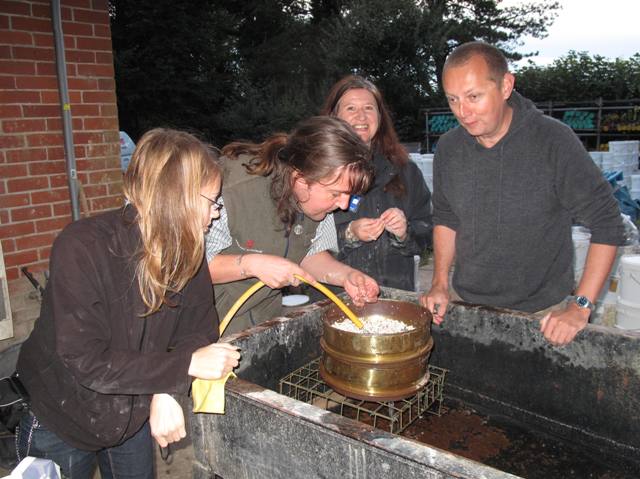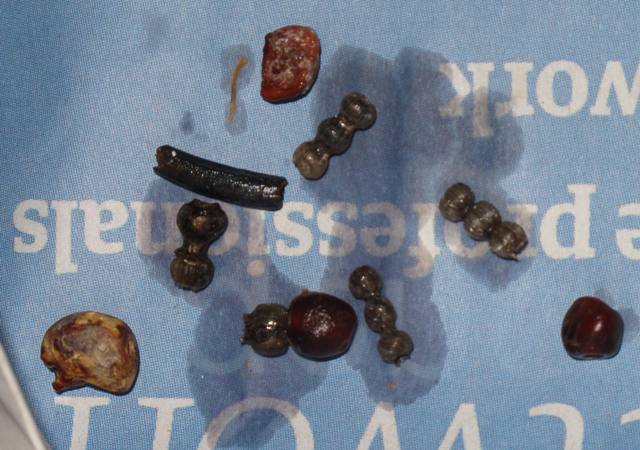Project Florence volunteers have been doing a fantastic job on the post-excavation processing from the Barrow Clump excavation. Angus Forshaw has summarised their progress so far for the blog:
Following the specialist training received last month our volunteers have been making carefully processing the human remains and grave samples from Barrow Clump.
Excellent progress has been made into the washing of human remains, with nearly half of the skeletons having been fully cleaned. These have included large well preserved skeletons as well as more delicate, root damaged individuals that have really tested our volunteers’ cleaning skills. Once all the skeletons have been cleaned and the bones have dried they will be analysed by osteoarchaeologists at Wessex Archaeology, who may be able to determine the age and sex of the individuals, as well as any diseases they might have suffered from.
Sample sieving has also proved an enlightening experience, teaching us not just about the process itself but about the importance of field recording. The significance of sampling graves during excavation was proved last week when not only bone fragments but also beads were discovered within samples from one grave context.
Some of these beads were made of glass and appeared to consist of three small beads joined together. Along with the glass beads there were a number of amber beads found in the sieved sample. These amber beads were the same as those found accompanying the skeleton during its excavation. Whilst the exact position of the beads in relation to the body is unknown, these beads indicate that a necklace or decorated item of clothing probably accompanied the skeleton at its burial.
The discovery of these beads has not only added to our understanding of the grave but also provided our volunteers with the euphoric moment of ‘finding’; much deserved after all their hard work.

Find out how you can get involved by clicking here.
To return to the main Project Florence blog click here.
